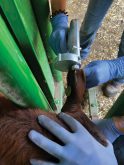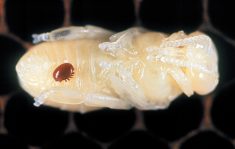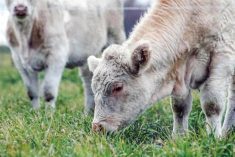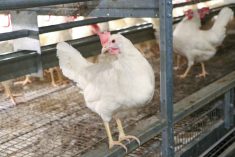Dairy and beef producers hoping for a simple solution to curtailing the spread of Johne’s disease have been dealt a disappointing blow by a University of Manitoba research project.
The agent which causes the disease cannot be killed by composting, says the study by the university’s National Centre for Livestock and the Environment (NCLE).
That leaves management as farmers’ only real tool for halting the spread of this serious ruminant disease.
The need for effective control measures is increasingly urgent as fears mount over a possible link between Johne’s disease and human health.
Read Also

Pig transport stress costs pork sector
Popular livestock trailer designs also increase pig stress during transportation, hitting at meat quality, animal welfare and farm profit, Agriculture and Agri-Food Canada researcher says
UNPROVEN LINK
If that link is ever proved, Johne’s would become a reportable livestock disease. And if that happened, the impact on the industry could be far worse than BSE, according to Denis Krause, a microbiologist with the animal science department.
“If Johne’s disease ever becomes a reportable disease, it’s going to have an enormous economic impact on beef and dairy cattle in this country,” said Krause, who headed the NCLE team.
Krause’s team set out to determine whether composting infected deadstock kills mycobacterium avium paratuberculosis (MAP), the bacterium which causes Johne’s disease.
The question is important because options for handling Johne’s-infected animals, once dead, are limited. They cannot be sold into the food chain. Simple burial results in risks to groundwater. Carcasses cannot
be rendered because of BSEtriggered regulations about specified risk materials (SRMs).
It’s been shown that incineration will destroy MAP. But farmers need a more cost-effective and environmentally friendly way to do it.
So NCLE figured composting was a good alternative, provided it killed the organism.
Krause said the composting process itself worked fine, with carcasses almost completely destroyed after over a year.
REMAINS VIABLE
But his team was surprised to learn the MAP agent remained alive and viable, even after all that time.
NCLE researchers then replicated the experiment in a laboratory under temperatures as high as 80 C for several months. Despite the extreme conditions, parts of the organism still survived.
NCLE is now involved with the Saskatoon and Calgary veterinary colleges in two large-scale experiments to learn more about the natural history of MAP.
They involve exposing calves to MAP to determine if they become Johne’s-positive at or shortly after birth, or at any time during their lives.
“It won’t help us destroy the organism. But it will help us manage animals better so that we know how to prevent the passage of the organism from the mother to the calf,” said Krause.
Johne’s is a chronic contagious bacterial disease that affects the small intestine of ruminants. First identified around the turn of the 20th century, this gastrointestinal disease is found worldwide. It enters a herd or flock through infected animals which shed the infectious organism in their manure.
COSTLY DISEASE
Johne’s is a costly disease in terms of lost production and mortality. There is no cure for it. The only effective way of avoiding Johne’s is not to introduce it into herds.
Some research suggests a possible link between Johne’s and Crohn’s, a chronic inflammatory bowel disease in humans. No connection has been shown between Johne’s, dairy consumption and Crohn’s disease. But if a link is ever established, Johne’s would be declared a reportable disease, consumers might shun milk and meat, and the impact on the livestock industry could be enormous, Krause said.
For that reason, the industry needs a mitigation strategy in case there is a link, he said.
The Canadian Johne’s Disease Initiative aims at reducing the prevalence of the disease in Canadian herds. A collaboration of industry, government and veterinary schools, CJDI focuses on education and awareness, research and provincial co-ordination.
Krause said the voluntary program seeks to identify Johne’s in herds by testing fecal samples. If the disease is confirmed, producers implement control strategies to reduce its incidence. [email protected]
———
“MAPisavery,verydifficultorganismtodestroy.”
– DENIS KRAUSE, U OF M


















